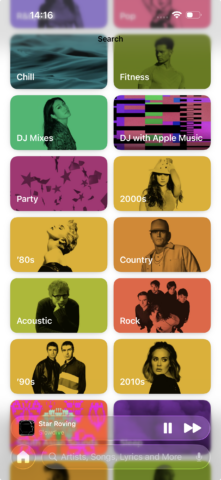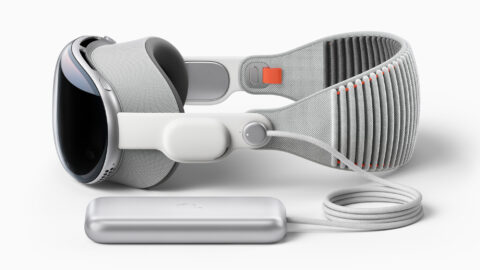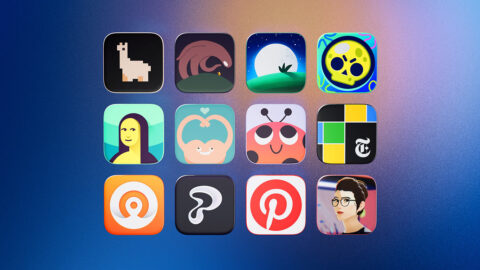On August 1, 2025, Tim Cook officially became Apple’s longest-serving CEO, surpassing the 5,090 days Steve Jobs was in charge. A day earlier, the company posted record-breaking Q3 results.
We are a very long way from the ‘beleaguered’ Apple of the 1990s, when it looked like the company might vanish at any moment. Fortunately, co-founder Steve Jobs returned, rescued Apple from the brink, and set it on the path to success. But it was Tim Cook who turned Apple into a colossus – a highly polished machine with few rivals.
So why does it feel like something’s off? There’s a growing unease that core Apple principles are slipping or even fundamentally broken. That doesn’t mean the company is doomed. But unless Apple reconsiders some of its current trajectories, it risks stagnating or leaving room for nimbler rivals to pounce.
Blurred vision: Poor interface design

Apple’s hardware remains broadly excellent – smart, efficient, and well-built. Software is a different story. The big offender this year is Liquid Glass, which manages to render entire parts of iOS, iPadOS, and macOS unreadable. This isn’t a subtle misstep – it’s a fundamental misunderstanding of basic design and usability principles.
It’s also a symptom of a deeper issue: does Apple at the highest levels still understand what good software design looks like? Beyond Liquid Glass, we increasingly see interfaces that infantilize the user by hiding almost everything. Bugs abound. And iPadOS in some cases comes across like it was designed by someone with a vendetta against human fingers.
The relentless annual release cycle plays a part – bugs and poor decisions linger as teams jump to the next thing. But this also feels like a failure of taste at the top. Today’s Apple execs say they don’t – shouldn’t – ask “What would Steve do?” Because Jobs told them not to. But when interfaces lack clarity and legibility, perhaps someone should.
OK computer: AI shortcomings

AI might change the world or fizzle as part of another bloated tech bubble. For now, it’s mired in a deluge of hype, and Apple for a time wisely stayed cautious. Increasingly, though, it’s diving in, seemingly fearful it will be left behind.
But promises have been broken. The most ambitious Apple AI components have yet to ship. What we’ve been left with is a set of half-baked features rushed to market to keep up appearances.
Apple’s AI tools fed people fake news. Image Playground serves up bland, lifeless imagery. Productivity tools promise more than they can deliver, with Mail incorrectly sorting messages and text tools sometimes improving your words but at other times generating AI slop.
Perhaps Apple had no choice. Investor pressure is real, and the entire industry is piling in. But this feels like another Siri moment, where Apple ends up lagging behind rivals when it comes to capability and coolness, only this time the stakes could be much higher.
Vision slow: The innovation question

People claim Apple can no longer innovate because it doesn’t revolutionize a product category every other Tuesday. But it never did. Even during the Steve Jobs CEO era, the major standout products were the iMac (1998), the iPod (2001), the iPhone (2007), the MacBook Air (2008) and the iPad (2010).
Since then, we’ve had two attempts at category-defining products. The Apple Watch (2014) became a success, but only after it pivoted from bling-on-a-wrist to a health and wellbeing aid. Vision Pro (2024), though, still feels like an expensive tech demo in a box. It seemingly misunderstands why most people today use headsets (games) while providing few compelling reasons for people to spend $3,500, not least given its poor battery life and lack of meaningful apps.
So, do detractors have a point? Maybe. Apple doesn’t have to reinvent everything – that shouldn’t be the yardstick. But when it tries to, the results need to matter.
Think profit: Apple versus the world

Apple used to be the underdog. Fans felt the company fought for them with better tools and smarter experiences. These days, Apple mostly fights with everyone, apart from its shareholders.
It battles regulators over monopoly and anti-competition claims. Services revenue keeps ballooning as ads pepper operating systems. And Apple fights developers over App Store fees, implying in court that Apple benevolently bestowed profitable businesses on app creators and that they should be eternally grateful.
In truth, third-party apps drove the early iPhone’s success and made that platform relevant. Without them, it could have ended up like Windows Phone (dead) or Android (thriving, but unambitious regarding what you can do with devices). And in 2025, restricting user freedoms no longer feels tenable. You still can’t install anything you want to on an iPhone or an iPad. You’re limited to what Apple allows in the App Store that it controls. Apple frames this as protecting you. But the reality is it’s protecting its own bottom line.
The shape of Apple to come
None of this means Apple is failing. By many measures, the company has never been more successful. But if you’ve been around long enough to remember the first iPod or iPhone reveal, you’re right to feel like this is a very different Apple.
If Apple genuinely believes the DNA of Steve Jobs runs through the company, it’s time to channel a little of that focus. Build designs that work for everyone and that are more than flashy tech demos. Say no to trends that don’t make sense. Launch hardware that truly matters.
Most of all, remember who really made Apple what it is today: not the shareholders, but the users, the app creators, the visionaries, and the dreamers.

